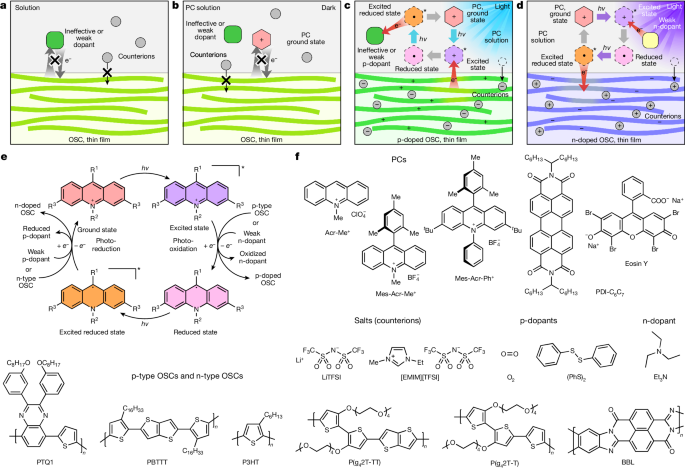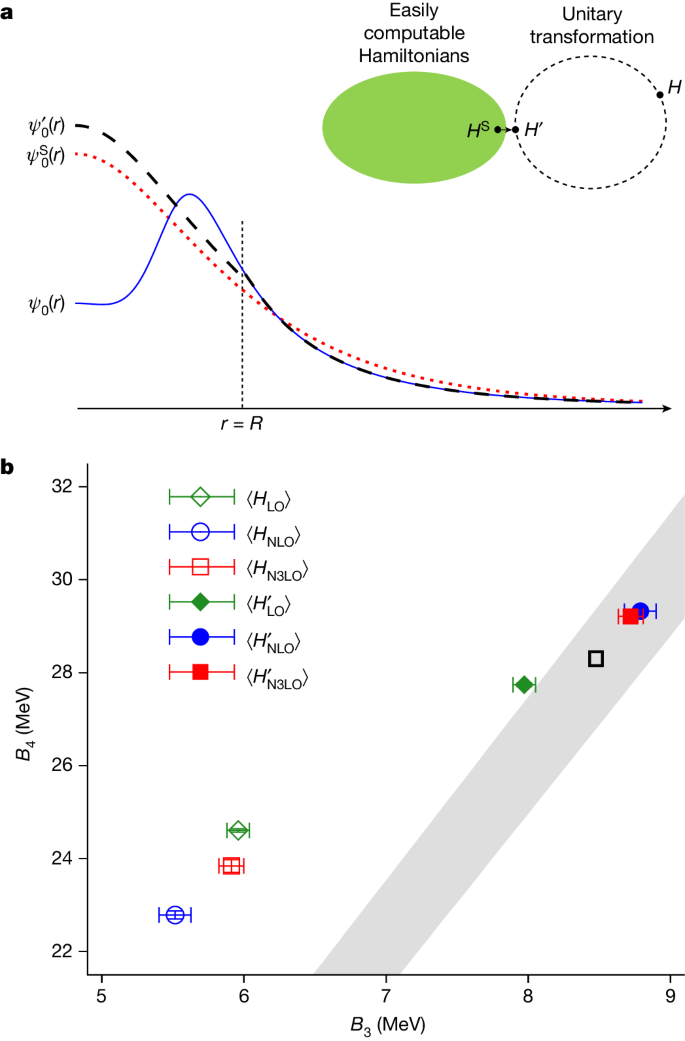2024-05-16 リンショーピング大学
<関連情報>
- https://liu.se/en/news-item/nasta-generations-hallbara-elektronik-dopas-med-luft
- https://www.nature.com/articles/s41586-024-07400-5
有機半導体の光触媒ドーピング Photocatalytic doping of organic semiconductors
Wenlong Jin,Chi-Yuan Yang,Riccardo Pau,Qingqing Wang,Eelco K. Tekelenburg,Han-Yan Wu,Ziang Wu,Sang Young Jeong,Federico Pitzalis,Tiefeng Liu,Qiao He,Qifan Li,Jun-Da Huang,Renee Kroon,Martin Heeney,Han Young Woo,Andrea Mura,Alessandro Motta,Antonio Facchetti,Mats Fahlman,Maria Antonietta Loi & Simone Fabiano
Nature Published:15 May 2024
DOI:https://doi.org/10.1038/s41586-024-07400-5

Abstract
Chemical doping is an important approach to manipulating charge-carrier concentration and transport in organic semiconductors (OSCs)1,2,3 and ultimately enhances device performance4,5,6,7. However, conventional doping strategies often rely on the use of highly reactive (strong) dopants8,9,10, which are consumed during the doping process. Achieving efficient doping with weak and/or widely accessible dopants under mild conditions remains a considerable challenge. Here, we report a previously undescribed concept for the photocatalytic doping of OSCs that uses air as a weak oxidant (p-dopant) and operates at room temperature. This is a general approach that can be applied to various OSCs and photocatalysts, yielding electrical conductivities that exceed 3,000 S cm–1. We also demonstrate the successful photocatalytic reduction (n-doping) and simultaneous p-doping and n-doping of OSCs in which the organic salt used to maintain charge neutrality is the only chemical consumed. Our photocatalytic doping method offers great potential for advancing OSC doping and developing next-generation organic electronic devices.



